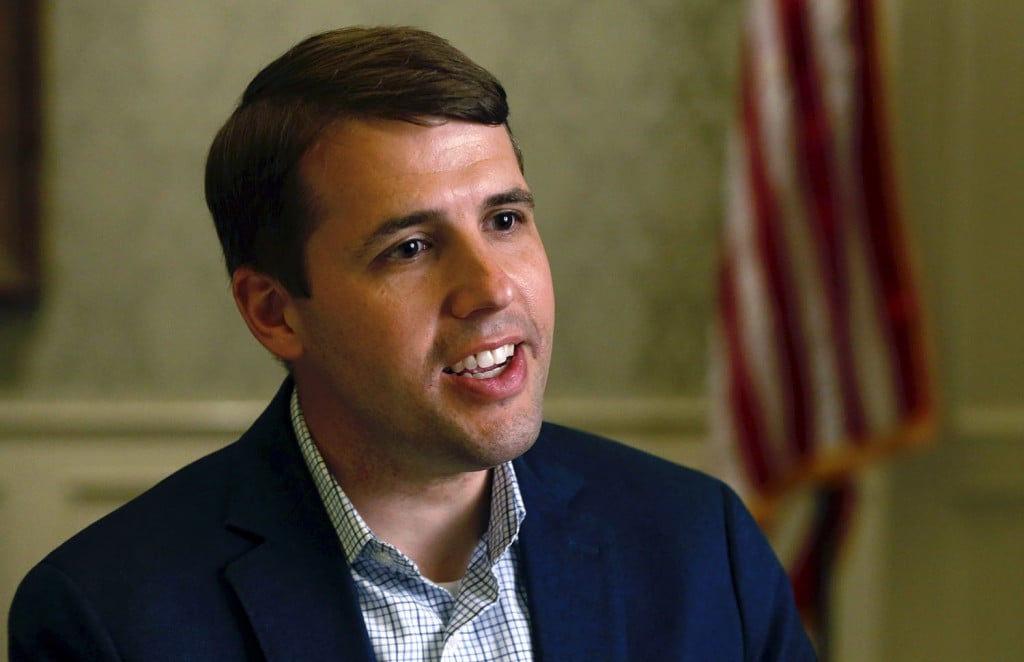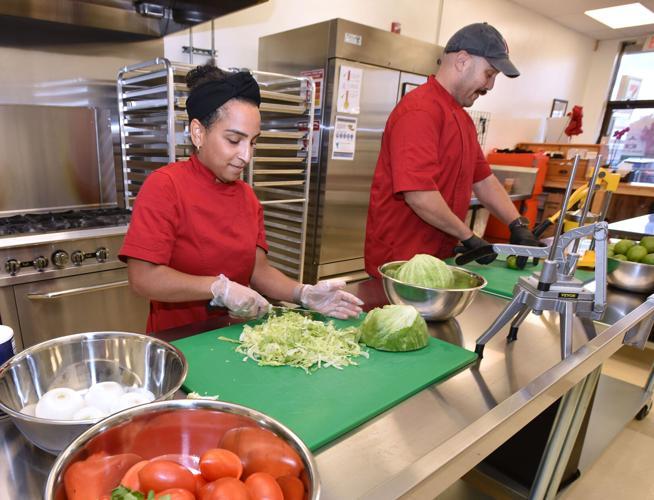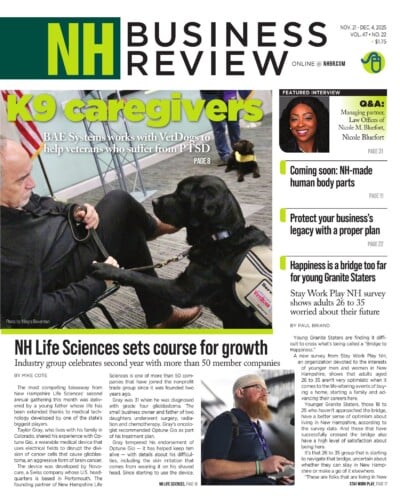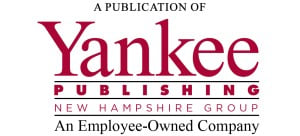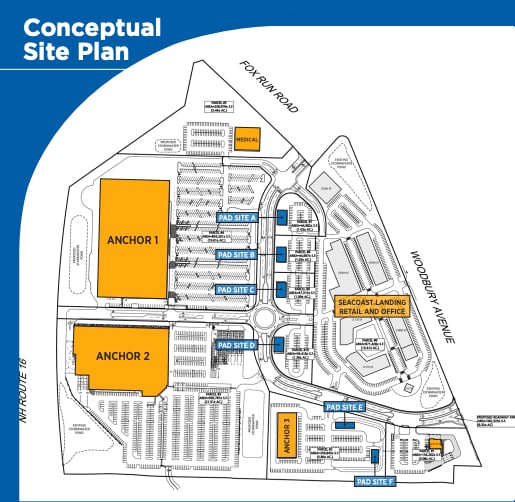Is unemployment uptick a concern in NH?
Rate has ticked up to 3% after hovering around 2% for two years
During the darkest days of the COVID-19 pandemic in 2020, New Hampshire’s unemployment rate soared to 16%, with some 120,000 Granite Staters out of work.
As the pandemic eased and the nation’s economic health recovered, so did the unemployment rate here, settling into a pattern of unemployment percentages in the low 2% range through 2023 and 2024.
So far this year, however, the unemployment rate is ticking up, reaching 3% in February and 3.1% in March through July, and dipping slightly back to 3% in August.
According to the NH Department of Employment Security (DES), the seasonally adjusted data for August placed the number of employed residents at 751,590, an increase of 280 from the previous month and a decrease of 1,190 from August 2024. The number of unemployed in August was 23,470.
New Hampshire’s numbers reflect a national trend as less-than-robust employment numbers contribute to a stalled economy despite the Trump Administration’s efforts to, among other things, tariff its way into bolstering domestic production and manufacturing, thus creating more job opportunities.
Richard Lavers, DES deputy commissioner, told NH Business Review he’s not too concerned thus far about the 2025 uptick in unemployment, particularly since New Hampshire typically has a softer landing when the rest of the nation is buffeted by economic turbulence.
“New Hampshire continues to be the job leader in the Northeast coming out of the pandemic,” said Lavers. “We have gained more private sector payroll jobs than any of our neighboring states.”
That’s not to say, however, that he isn’t a little wary going forward.
“How that continues to look through the rest of this year, as the number of new jobs created is really stagnant, how that continues to shake out for both New Hampshire and other Northeast neighbors, time will tell,” said Lavers.
Some caution and concern for the state economy has come from the New Hampshire Fiscal Policy Institute (NHFPI).
Its recent economic analyses point to higher unemployment, higher day-to-day costs and stagnant wages as concerning.
“The long-term challenges facing New Hampshire’s economy persist, particularly the high housing and early care and education prices that restrict workforce growth,” said Phil Sletten in an August report he wrote as research director of NHFPI.
“The state continues to rely on in-migration, including international migration, for population growth, as deaths in the state substantially outnumber births. But with the national economy potentially changing course, New Hampshire’s workers and businesses may have new challenges to face in the coming year,” Sletten added.
Sletten noted that the average number of people unemployed during 2024 was about 19,800 people, but the average in the first seven months of 2025 has been an estimated 23,600.
Though increasing, New Hampshire’s jobless rate is climbing at the slowest rate in the country.
WalletHub has released rankings for the states where unemployment claims are increasing the most.
The top five are, in order: Connecticut, Tennessee, District of Columbia, Nebraska and Illinois. The states with the lowest increases are Indiana, Alabama, Vermont, Wisconsin and New Hampshire.
WalletHub took a snapshot assessment of four employment-related factors nationwide. For the Granite State, the change in unemployment claims the week of Aug. 25, 2025, compared to the week of Aug. 18 was -35.12%. The change in employment claims those same weeks of comparison was -17.94%. The change in unemployment claims year to date versus the same 2024 period was 12.69%. The unemployment claims per 100,000 people in the labor force were 36.
For Granite Staters’ economic health, it is one of stagnation, according to NHFPI.
In a new report based on census data, NHFPI notes that, from 2023 to 2024, median household incomes were essentially flat when adjusting for inflation, poverty rates remained unchanged, nearly half of renter households were cost-burdened, and health insurance coverage held steady.
“These stagnant indicators suggest that, while New Hampshire has avoided backsliding, many families continue to face persistent challenges meeting basic needs,” said NHFPI.
Sletten, in a recent interview with WMUR’s NH Business segment, noted the high cost of residential housing in New Hampshire. The median price of a single-family home in the state in August was $550,000, the second highest price point this current year.
“This has been a massive increase in the cost of housing for Granite Staters, and it does mean that it’s harder for people to be able to move here into the state to add to the labor force in New Hampshire,” said Sletten. “That’s a continuing story, but what we see with this increase in prices is that average wages in New Hampshire last year and thus far this year have not outpaced inflation, which means that people’s real spending power has been eroded, and housing is part of that.”
Job growth nationwide has slowed significantly in recent months. In April, job growth was +147,000 in nonfarm payroll employment. Since then:
+139,000 in May -13,000 in June +73,000 in July +22,000 in August President Donald Trump was so riled by the weaker-than-expected July numbers that he called them fake and fired Bureau of Labor Statistics (BLS) Commissioner Erika McEntarfer on Aug. 1. They turned out to be worse in August.
An August poll by the University of New Hampshire Survey Center shows Trump’s standing among Granite Staters is unchanged from polling in June. A majority of New Hampshire residents (54%) disapprove of Trump’s handling of his job as president, 45% approve, and 1% are unsure. Trump’s net approval rating (the percentage who approve minus the percentage who disapprove), is -9, statistically unchanged from -11 in June, according to the survey center.
The Federal Reserve on Sept. 17 lowered the prime interest rate by a quarter of a percent, the first rate reduction since December 2024. The Fed is concerned about what some economists are calling a “jobs recession.” Fed officials are concerned that a slowdown in job growth could lead to increased unemployment. By lowering the rate — with more cuts expected this year — stimulating the economy is a higher priority than controlling the already-elevated inflation rate, which is still above the Fed’s 2% target.
Lavers at DES said New Hampshire’s diversified job market will help keep it grounded in the likely turbulence ahead.
“We don’t really have one sector that dominates our workforce like you have in some other states,” said Lavers. “We’ve got a lot of workforce within health care, professional services, manufacturing, business services. Really, no one sector accounts for more than 15% to 18% of total workforce in New Hampshire. So I think that helps New Hampshire stay more resilient than some other states.”
The economic health of the state’s employers and their workforce has a direct bearing on the economic health of state government in terms of tax revenue — businesses paying their taxes, people buying homes that also generate tax revenue.
So far in the new fiscal year 2026, the state is lagging in that regard. Through July and August, the state has collected $250.1 million from its various revenue sources. That is $10.3 million below estimates, and $21.4 million less than a year ago.
One of the biggest drags on revenue is the tax paid by businesses. So far, those taxes have generated $44.4 million, which is $9.5 million less than estimates and $10.8 million less than the same period a year ago.
In its August revenue analysis, the state Department of Administrative Services cited “a decrease in corporation payments” as the reason for the revenue slide. In a weakened economy, corporate tax profits can take a hit, meaning less revenue for a state such as New Hampshire.
Other major sources of revenue — the Real Estate Transfer Tax and the Meals and Rental Tax — are running ahead of the same period last year.
The Lottery Commission, a large contributor to the Education Trust Fund, is looking forward to a banner season of sports gambling.
Charlie McIntyre, executive director of the New Hampshire Lottery, expects the 2025-2026 NFL and NCAA football seasons to surpass last year’s betting totals of $180 million. Revenue from gaming is directed solely toward the state’s Education Trust Fund.
“Football season is always our biggest New Hampshire sports betting driver,” McIntyre said. “We’re expecting football season to bring in more revenue for public education than any other time of year, and to help push us toward back-to-back record-breaking years for sports betting.”
